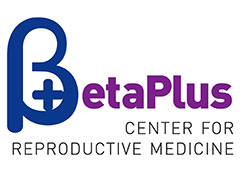Ovulation is a moment when the follicle releases an egg, which can be fertilized in the next 24 hours. The egg is alive for 24 hours, whereas the sperm can live up to three days. This means, a woman can get pregnant only during these four days in a month.
The menstrual cycle is calculated from the first day of one period until the first day of the following period. In the middle of the cycle, the luteinizing hormone (LH) level rises rapidly. Ovulation occurs approximately 36 hours after the rise of the hormone level. LH leads to the final ripping of the egg and starts synthesis of progesterone inside the follicle. The first part of the cycle is proliferative and determines the time before the ovulation (during this time the follicles grow, as well as the level of hormone and the thickness of the uterus inner lining). The first phase is also called the follicular phase. Second part of the cycle is the luteal or secretory phase (due to the yellow body – corpus luteum).
During the ovulation, the membrane of the leading follicle, which at that time reaches around 22-28 mm, ruptures and releases the egg into the ovary. The egg can be fertilized if the sperm is present and waiting in the ovary.
Some women feel the ovulation as dull pain in the lower part of the abdomen and sometimes weak bleeding may also appear. In rare cases, the rupture of the follicle membrane during the ovulation occurs right where a blood vessel lies, which can cause bleeding. This causes more severe symptoms – blood can start gathering in the abdomen which can result in the so-called peritoneal irritation (pain, vomiting instinct) or in the ovary which also causes pain due to the ovarian expansion. Such cases mostly end without complications, the bleeding stops and no medical intervention is needed.




